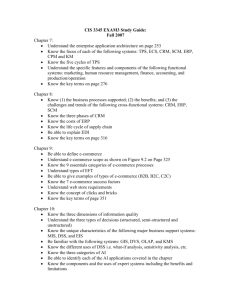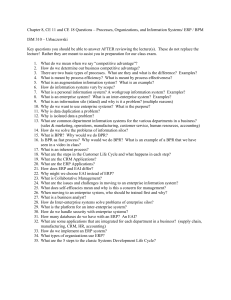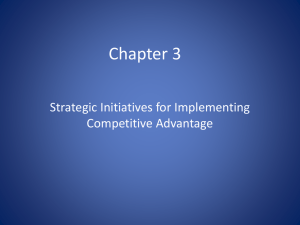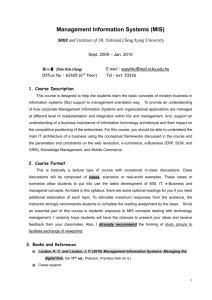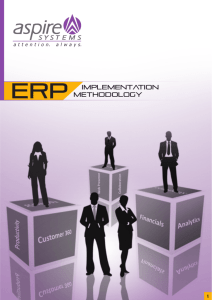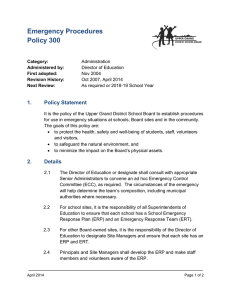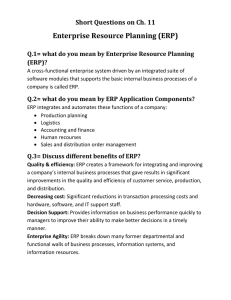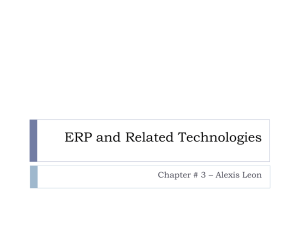63-b - St.Joseph's College
advertisement
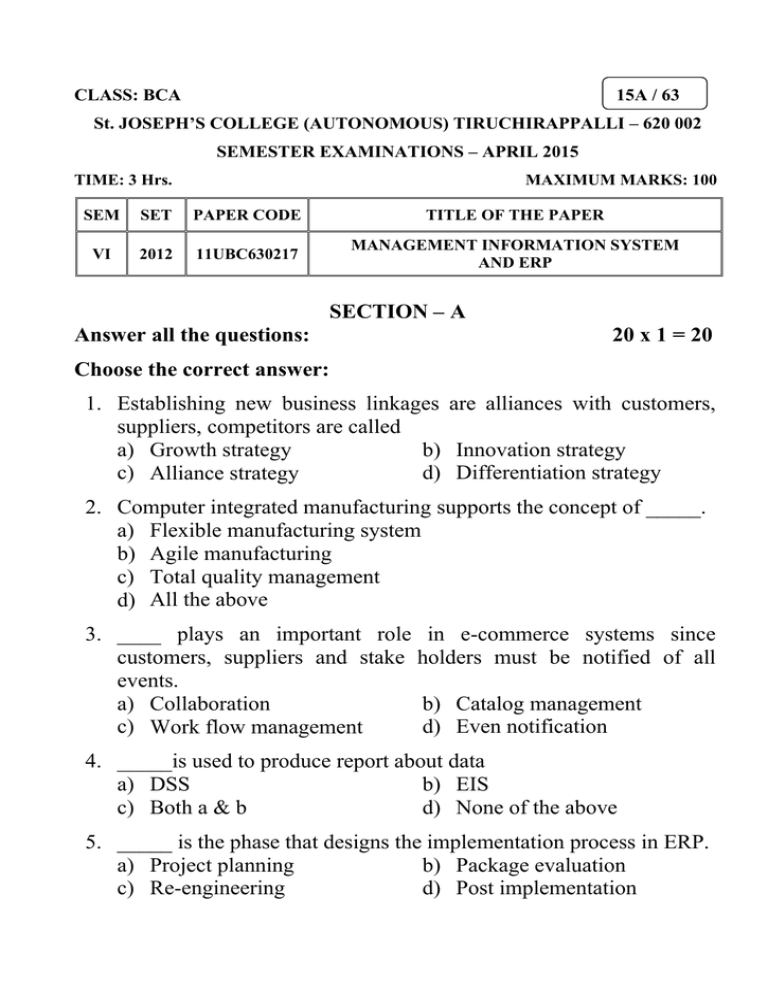
CLASS: BCA 15A / 63 St. JOSEPH’S COLLEGE (AUTONOMOUS) TIRUCHIRAPPALLI – 620 002 SEMESTER EXAMINATIONS – APRIL 2015 TIME: 3 Hrs. MAXIMUM MARKS: 100 SEM SET PAPER CODE TITLE OF THE PAPER VI 2012 11UBC630217 MANAGEMENT INFORMATION SYSTEM AND ERP SECTION – A Answer all the questions: 20 x 1 = 20 Choose the correct answer: 1. Establishing new business linkages are alliances with customers, suppliers, competitors are called a) Growth strategy b) Innovation strategy c) Alliance strategy d) Differentiation strategy 2. Computer integrated manufacturing supports the concept of _____. a) Flexible manufacturing system b) Agile manufacturing c) Total quality management d) All the above 3. ____ plays an important role in e-commerce systems since customers, suppliers and stake holders must be notified of all events. a) Collaboration b) Catalog management c) Work flow management d) Even notification 4. _____is used to produce report about data a) DSS b) EIS c) Both a & b d) None of the above 5. _____ is the phase that designs the implementation process in ERP. a) Project planning b) Package evaluation c) Re-engineering d) Post implementation Fill in the blanks: 6. The component that converts input into output is called _____. 7. 8. _____systems automate the production process. _____are information system that combine the features of management information system and decision support system. 9. _____is a corporate level strategy focusing on creating and maintaining relationship with customer. 10. _____is the degree of difficulty of implementing, operating and maintaining the ERP system. State True or False: 11. Tarit knowledge is data, document and things written or stored on computers. 12. Collaborative CPM synchronizes customer interactions consistently across all channels. 13. Goal seeking analysis reverses the direction of the analysis done in what if analysis and sensitively analysis. 14. OLAP applications are dependent on data ware houses and transaction processing system to refresh their source level data. 15. End user training is the phase where the actual user of the system will be given training on how to use the system. Match the following: 16. Feedback - a) Drivel-down 17. SCM 18. OLAP - b) Operation and Maintenance - c) Performance of the System 19. Datamining 20. Post implementation - d) Cross functional inter-enterprise system - e) Extract information SECTION – B Answer all the questions: 5 x 4= 20 21. a. Explain about five basic competitive strategies. OR b. Describe briefly about BPR. 22. a. Explain the three phases of CRM. OR b. List the benefits and challenges of SCM. 23. a. Explain the categories of E-Commerce. OR b. Explain the types of Analytical Modeling. 24. a. What is a data warehouse? Describe the structure of data warehouse. OR b. Mention the different styles of OLAP. Explain. 25. a. Describe the major objectives of ERP implementation. OR b. Why do many ERP implementations fail? SECTION – C Answer any FOUR questions: 4 x 15 = 60 26. Explain briefly about the resources of Information System. 27. Describe the concept of marketing and manufacturing systems. 28. Discuss in detail about DSS and MIS. 29. Explain the different phases involved in BPR. 30. Explain the different phases of ERP implementation. **************

